
Latest Keeping Track Databook Shows What’s At-Risk If All Children Are Not Counted in the 2020 Census
Digital Briefs
March 18, 2020
For nearly 30 years, CCC’s Keeping Track of New York City’s Children data book has provided New Yorkers at large, government officials, philanthropic leaders, academics, and child and family service professionals with information on both welcomed and worrisome trends facing children and families across New York City. The 2020 edition highlights how, despite improved citywide outcomes, children and families continue to experience significant disparities based on their race and ethnicity, immigration status, and other demographics including the neighborhood in which they live.
CCC is calling attention to these disparities as the self-response period of the 2020 Census begins because Black, Latino and Asian children, children in low-income families, and children in immigrant families are the most likely to be missed in the census count.
Ways Census Data Are Used for Funding
An undercount jeopardizes federal resources for programs supporting nutrition, child care, education, health care, housing, and others that are essential in the city’s efforts to promote positive health and development outcomes for all children. Given the concerns around access to health care and human service supports that are front and center due to COVID-19, now is an important time to ensure that every New Yorker has information about the importance of completing the Census.
Economic Security
The decennial census is the basis for determining the amount of federal funding to go to states for programs that support economic stability, such as food stamps and cash assistance.
While the share of children living in poverty has fallen since the Great Recession, more than half of all NYC children continue to face the burden of poverty. In areas with higher rates of child poverty, SNAP is a critical resource for families. And yet, SNAP caseloads are declining dramatically, especially among immigrant families who may remain eligible but fear that participation in public programs might threaten the pathway to citizenship for one or more family members.
Food Stamp (SNAP) Recipients

YEAR-OVER-YEAR CHANGE IN SNAP CASELOADS BY CITIZENSHIP STATUS

Housing
Funding for affordable housing programs such as Section 8 vouchers and payment program, Very Low to Moderate Income housing loans, Low Income Home Energy Assistance, Public Housing Capital Fund, HOME program, Low Income Housing Tax Credit, are all contingent on the Census count. The number of families with children in homeless shelters grew 50% in the past decade as the growth in median rents has outpaced growth in median incomes substantially. And while the share of families with children returning to a NYC homeless shelter within a year of leaving is declining, but almost a quarter of families who exit shelter without a subsidy return within a year.
SEVERE RENT BURDEN BY HOUSEHOLD INCOME LEVEL, 2018
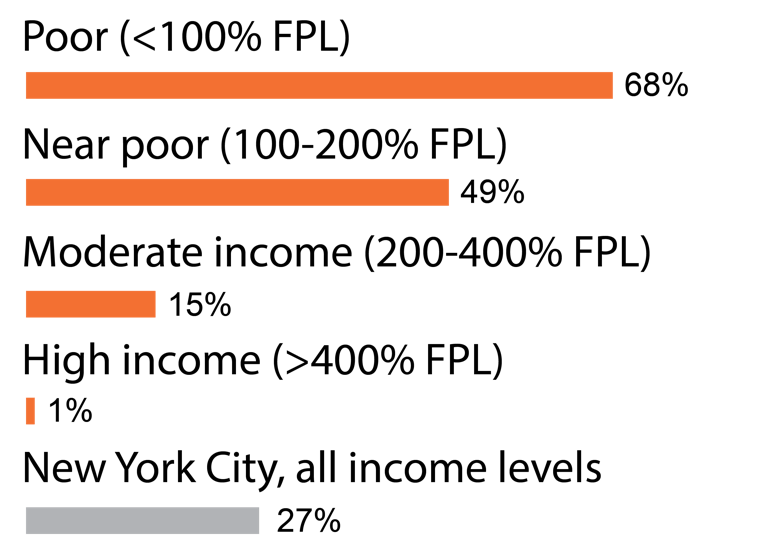
RE-ENTRIES AMONG FAMILIES WITH CHILDREN INTO DHS SHELTER, BY EXIT WITH/OUT SUBSIDIES
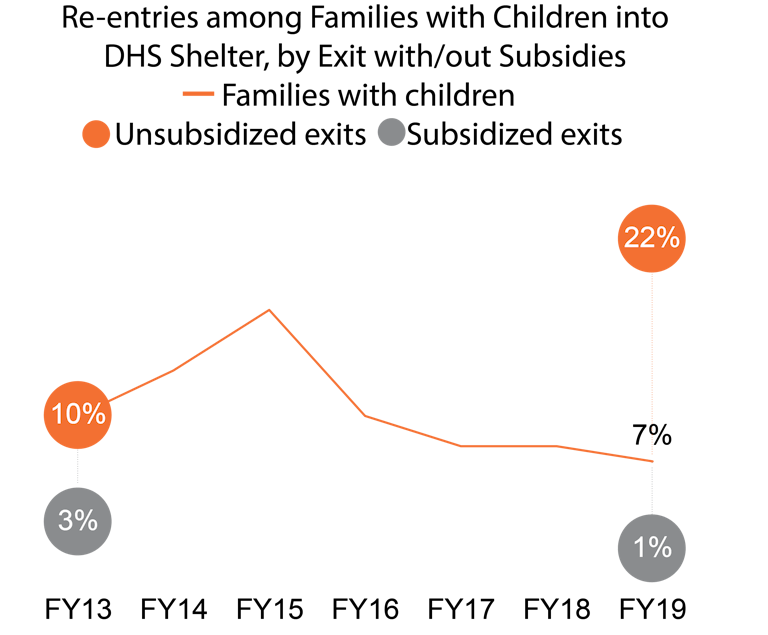
Health
The census supports the health of children and families in multiple ways, including: distribution of federal funds for programs that promote health such as Health Insurance [Medicaid, Medicare, and SCHIP], Community Services Block Grant, Child Care and Development Block Grant, and Health Care Centers; and utilization of population data to plan for hospitals, nursing homes, clinics, and the location and funding of other health services.
Health insurance coverage for children is nearly universal in NYC, but uninsured rates are high among Asian children and non-citizens. In some neighborhoods like Flushing, Bayside and Murray Hill/Stuyvesant, uninsured rates for children are more than double the city average.
CHILDREN UNDER 19 WITHOUT HEALTH INSURANCE BY COMMUNITY DISTRICT, 2018
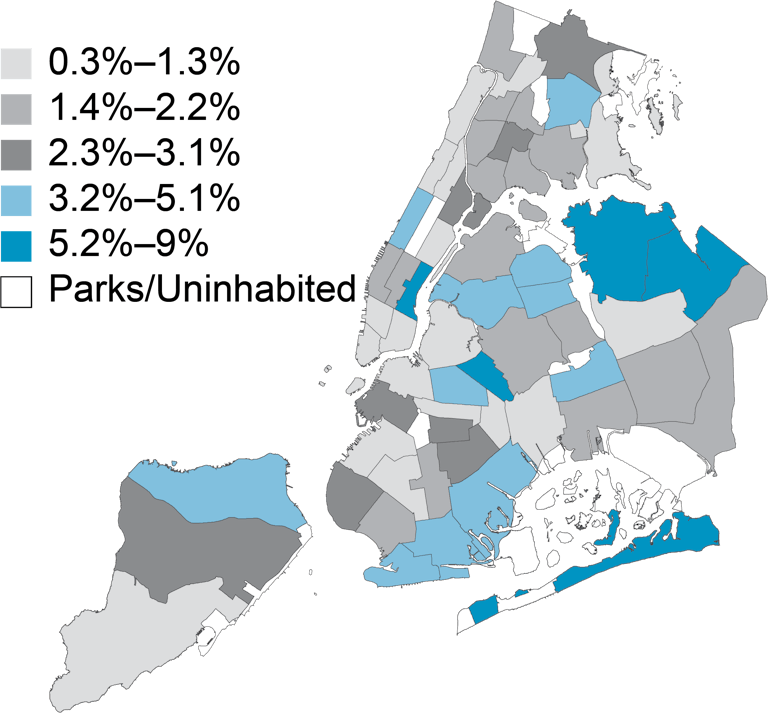
CHILDREN UNDER 18 WITHOUT HEALTH INSURANCE BY RACE/ETHNICITY, 2018
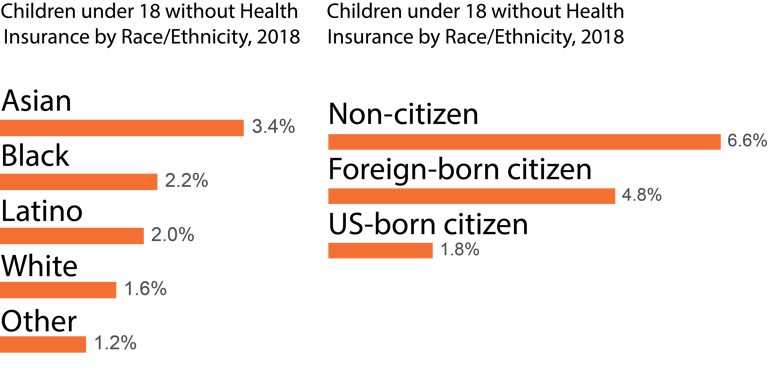
Education
The census is critical to the education system in NYC. Not only does the census count inform federal funding for programs such as National School Lunch and Breakfast, HeadStart, Federal Pell Grant and Federal Direct Student Loans, Special Education Grants, and Title I Grants; but it also informs where new schools are needed and where spending will go to help pay for teachers, textbooks, and other educational expenses.
Over 123,000 children under age 5 receive publicly funded early care and education, but the system serves primarily 4-year-olds with minimal capacity for infants and toddlers. In the K-12 public school system, school segregation along race/ethnic lines is widespread and the achievement gap persists with students in poverty, students with disabilities, and English language learners facing significant obstacles to success.
SHARE OF CHILDREN UNDER AGE FIVE ENROLLED IN CONTRACTED PUBLICLY FUNDED EARLY CARE AND EDUCATION PROGRAMS BY AGE GROUP, 2018

SHARE OF SCHOOLS THAT ARE REPRESENTATIVE BY SCHOOL DISTRICT, SY 2018/19
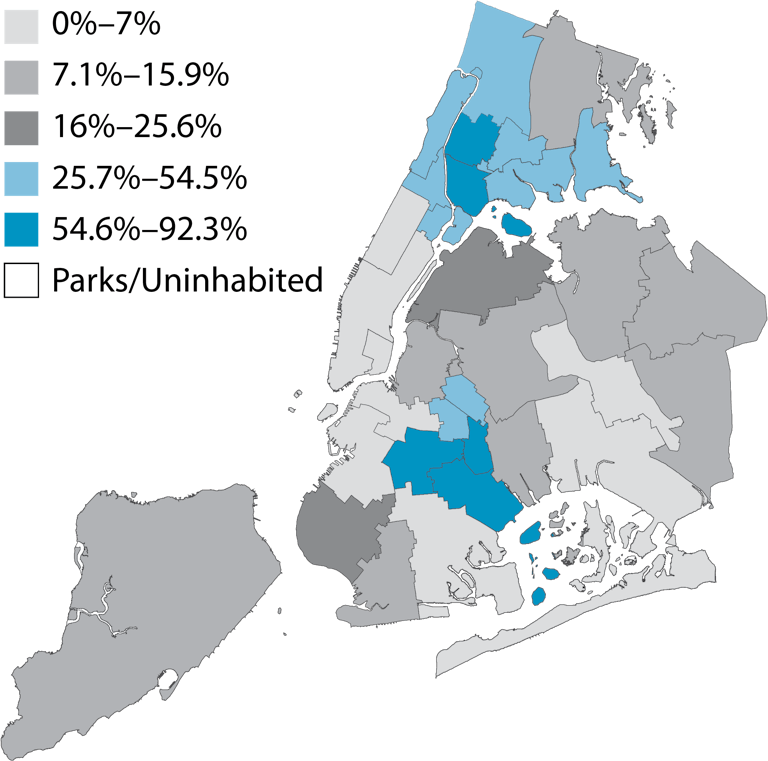
Family Community
The Census is responsible for the allocation of funds for child welfare, including: Title IV-E Foster Care, Adoption Assistance, and the Social Services Block Grant.
The number of children in foster care is at a historic low with just over 8,400 children in care; and foster care placements are more likely to keep children with kin. A majority of children in foster care are Black – vastly disproportionate to their share of the overall population.
FOSTER CARE PLACEMENTS BY LEVEL OF CARE
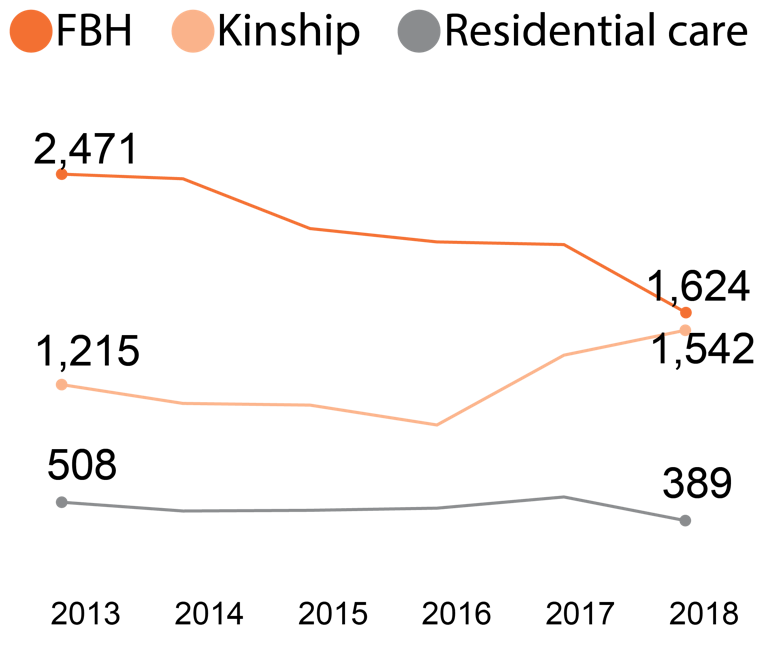
FOSTER CARE POPULATION AND CHILD POPULATION BY RACE/ETHNICITY, 2018

Keeping Track of New York City’s Children is Available Online
For the first time in close to 30 years, NYC’s most comprehensive databook on the well-being of NYC’s Children and their families is available to read and download on CCC’s website.
Keeping Track of New York City’s Children has the latest data on demographics, economic security, housing, health, education, and indicators specific to youth, family and community well-being. The report examines data from dozens of government administrative sources and agencies, including the United States Census Bureau, and disaggregates data by demographic groups to identify meaningful disparities that deserve attention in policymaking and public discourse.
This data book is a complement to our online database at data.cccnewyork.org where hundreds of additional indicators of child and family well-being are also available, along with interactive maps and other data visualizations to make it easier for all New Yorkers to know and share the facts on NYC’s children.



